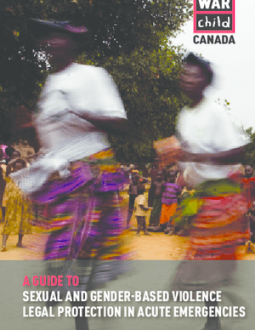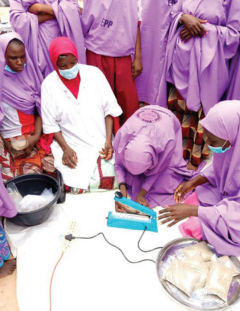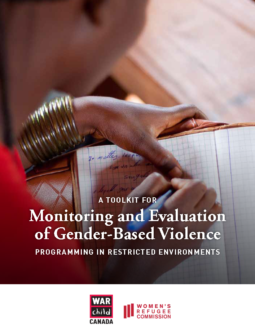
A Guide to Sexual and Gender-Based Violence Legal Protection in Acute Emergencies
PublishedBackground
Refugee women and girls are exposed to epidemic levels of sexual and gender-based violence (SGBV) throughout their displacement; they are more affected by violence than any other population of women in the world.
In times of war and its aftermath, legal structures that traditionally protect women and children, including formal and informal justice systems and respect for the rule of law, break down leaving them vulnerable to abuse including but not limited to rape, early and forced marriage and domestic violence. The atrocities and abuses of war and the resultant culture of violence can become ingrained, creating a culture of impunity.
Summary
The guide summarizes an assessment of War Child Canada’s three-pronged legal protection model was implemented with South Sudanese refugees in Northern Uganda and uses it to identify the most important lessons for ensuring legal protection mechanisms are in place at the onset of an emergency.
It is meant to help build the evidence base on what may be a replicable model, or set of practices, for survivor-centered SGBV legal protection services in emergency settings; expand understanding of positive practices and lessons learned; and help humanitarian actors gain the competencies needed to uphold their SGBV responsibilities.
Assessment
The guide details War Child Canada’s three-pronged legal protection model and lessons learned under each of the three areas:
Lessons learned
1) Legal Aid: Provision of legal aid services of women and child survivors of SGBV
- Register as a local law firm, if possible.
- Develop capacity to work within informal legal systems.
- Liaise with and work through local structures.
- Establish clear referral pathways.
- Provide holistic support to survivors.
- Plan for community-based part-time worker and volunteer roles and needs.
- Ensure all active cases can be closed before exit.
- Identify and plan for other local barriers.
2) Legal Training: Training and capacity building with legal duty bearers
- Design trainings to meet the needs of different targeted duty bearers.
- Ground the learning in traditional values and cultural norms and beliefs.
- Structure trainings to fit the local context.
- Include a deliberate focus on training healthcare personnel.
- Training of Trainers.
- Evaluate training effectiveness.
- Be mindful of boundaries of community volunteer roles.
3) Community Awareness: Outreach and awareness-raising
- Prioritize sensitization and community outreach and education.
- Conduct mass awareness campaigns.
- Address the needs of host communities.
- Engage women as community SGBV leaders.
- Include community members in awareness campaign design.
- Emphasize supportive features of local law.
- Plan for costs to participants.



